
John Singleton Copley was an Anglo-American painter, active in both colonial America and England. He was suspected to be born in Boston, Province of Massachusetts Bay, to Richard and Mary Singleton Copley, both Anglo-Irish. After becoming well-established as a portrait painter of the wealthy in colonial New England, he moved to London in 1774, never returning to America. In London, he met considerable success as a portraitist for the next two decades, and also painted a number of large history paintings, which were innovative in their readiness to depict modern subjects and modern dress. His later years were less successful, and he died heavily in debt. He was father of John Copley, 1st Baron Lyndhurst.
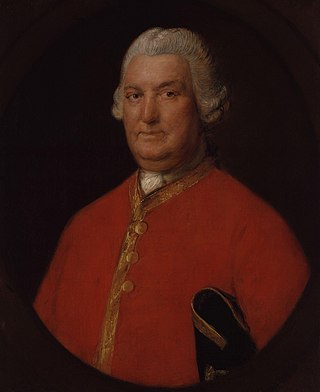
Major-General Stringer Lawrence was an English soldier, the first Commander-in-Chief of Fort William.

Matthew Wren was an influential English clergyman, bishop and scholar.
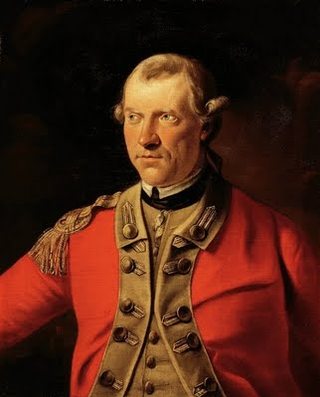
Major-General Henry Gladwin was a British army officer in colonial America and the British commander at the Siege of Fort Detroit during Pontiac's Rebellion in 1763. He served in the disastrous campaign of Edward Braddock and in other actions in the French and Indian War but is best remembered for his defense of Detroit in Pontiac's Rebellion.

The Randolph family of Virginia is a prominent political family, whose members contributed to the politics of Colonial Virginia and Virginia after statehood. They are descended from the Randolphs of Morton Morrell, Warwickshire, England. The first Randolph in America was Edward Fitz Randolph, who settled in Massachusetts in 1630. His nephew, William Randolph, later came to Virginia as an orphan in 1669. He made his home at Turkey Island along the James River. Because of their numerous progeny, William Randolph and his wife, Mary Isham Randolph, have been referred to as "the Adam and Eve of Virginia". The Randolph family was the wealthiest and most powerful family in 18th-century Virginia.

Sir Robert Palk, 1st Baronet of Haldon House in the parish of Kenn, in Devon, England, was an officer of the British East India Company who served as Governor of the Madras Presidency. In England he served as MP for Ashburton in 1767 and between 1774 and 1787 and for Wareham, between 1768 and 1774.

Elizabeth Bridget Armistead or Armitstead was a courtesan and, later, the wife of statesman and politician Charles James Fox. Her relationship with and marriage to Fox was one of the most famous and controversial of their age.

Thomas Martin, known as "Honest Tom Martin of Palgrave", was an antiquarian and lawyer.

Henry Swinburne (1743–1803) was an English travel writer.

John Owen (1754–1824) was an English cleric, who served as Archdeacon of Richmond, and Chaplain General to the British Armed Forces during the later part of the Napoleonic Wars.

Frances Elizabeth Lupton was an Englishwoman of the Victorian era who worked to open up educational opportunities for women. She married into the politically active Lupton family of Leeds, where she co-founded Leeds Girls' High School in 1876 and was the Leeds representative of the North of England Council for Promoting the Higher Education of Women.
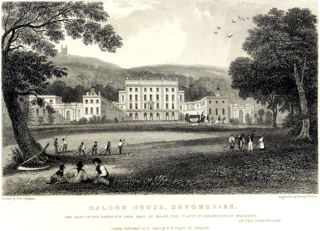
Haldon House on the eastern side of the Haldon Hills in the parishes of Dunchideock and Kenn, near Exeter in Devon, England, was a large Georgian country house largely demolished in the 1920s. The surviving north wing of the house, comprising the entrance front of the stable block, consists of two cuboid lodges linked by a screen pierced by a Triumphal Arch, with later additions, and serves today as the "Lord Haldon Hotel". The house was originally flanked by two such paired pavilions, as is evident from 19th century engravings.

Eastwick Park, also Eastwich Park, at Great Bookham in Surrey, England was the family seat of the Howards of Effingham for about seventy years.
Sir John Kennaway, 1st baronet, of Escot House in the parish of Talaton in Devon, was a British soldier and diplomat.
Major-General Sir Justin Sheil was an Irish army officer and diplomat, the British envoy in Persia from 1844 to 1854.
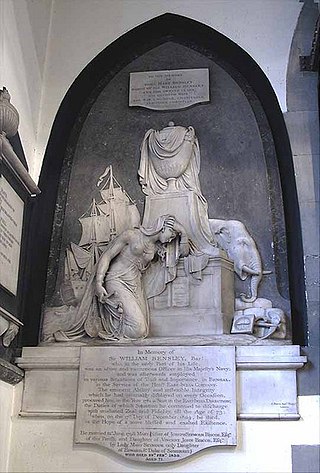
Sir William Bensley, 1st Baronet was an English director of the East India Company.

Walter Palk (1742-1819), of Marley House in the parish of Rattery, Devon, England, was a Member of Parliament for his family's Pocket Borough of Ashburton in Devon from 1796 to 1811. He served as Sheriff of Devon (1791-2) and in 1798 was a Captain in the Ashburton Volunteer Militia, one of many such units formed across Devon to counter a possible invasion by Napoleon.

Reading Abbey Girls' School, also known as Reading Ladies’ Boarding School, was an educational establishment in Reading, Berkshire open from at least 1755 until 1794. Many of its pupils went on to make a mark on English culture and society, particularly as writers. Most famous is Jane Austen, who used the school as a model of "a real, honest, old-fashioned Boarding-school".
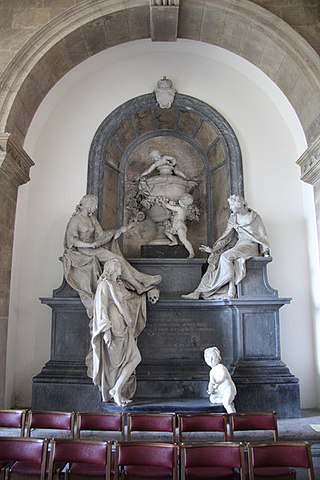
Peter Matthias Van Gelder or Vangelder (1739–1809) was an 18th century British sculptor, architect and builder of Dutch descent.



















